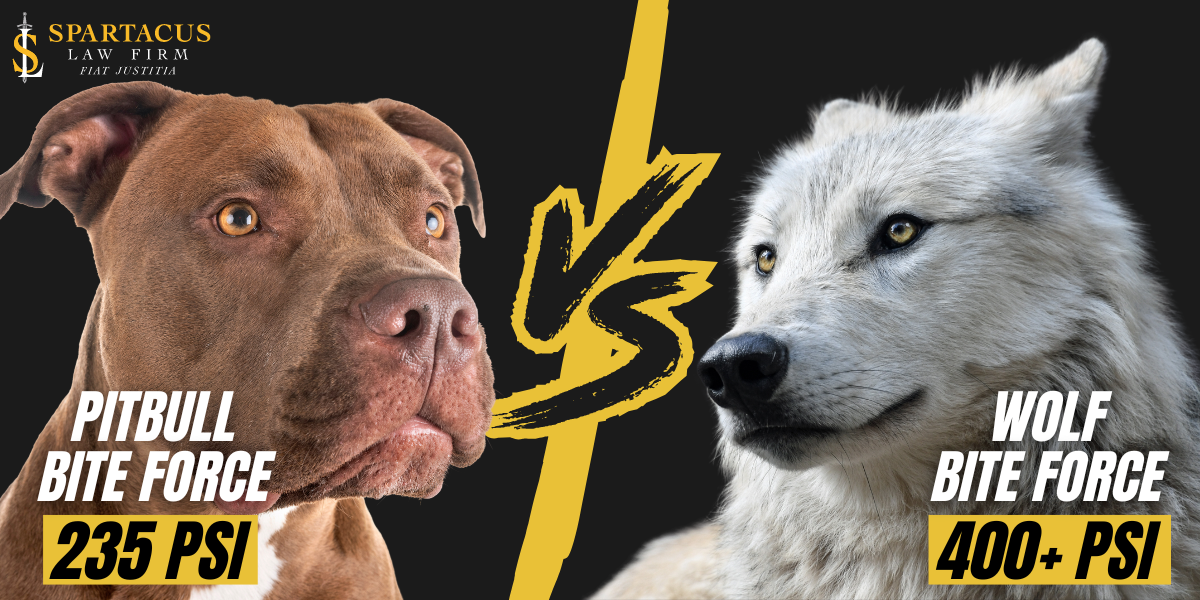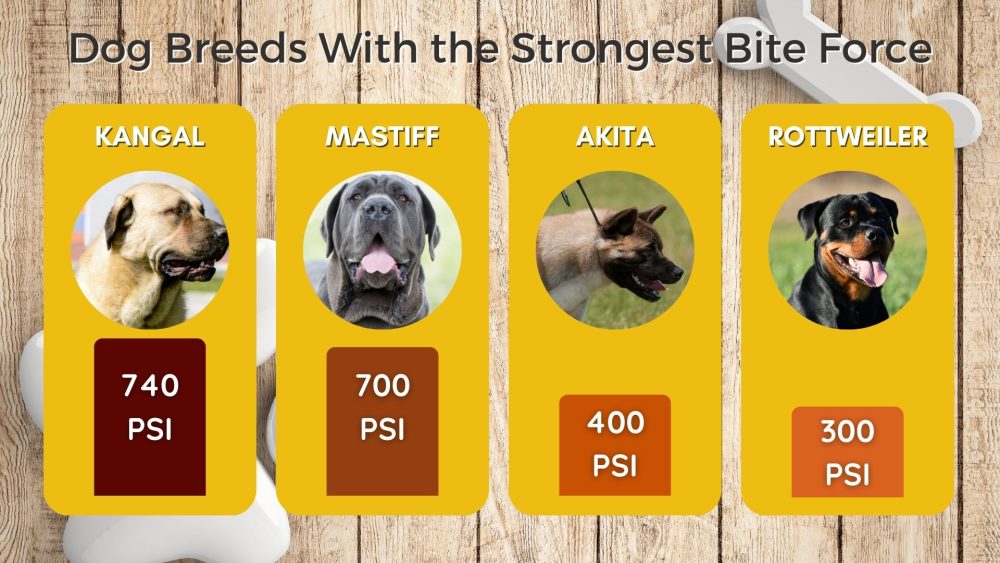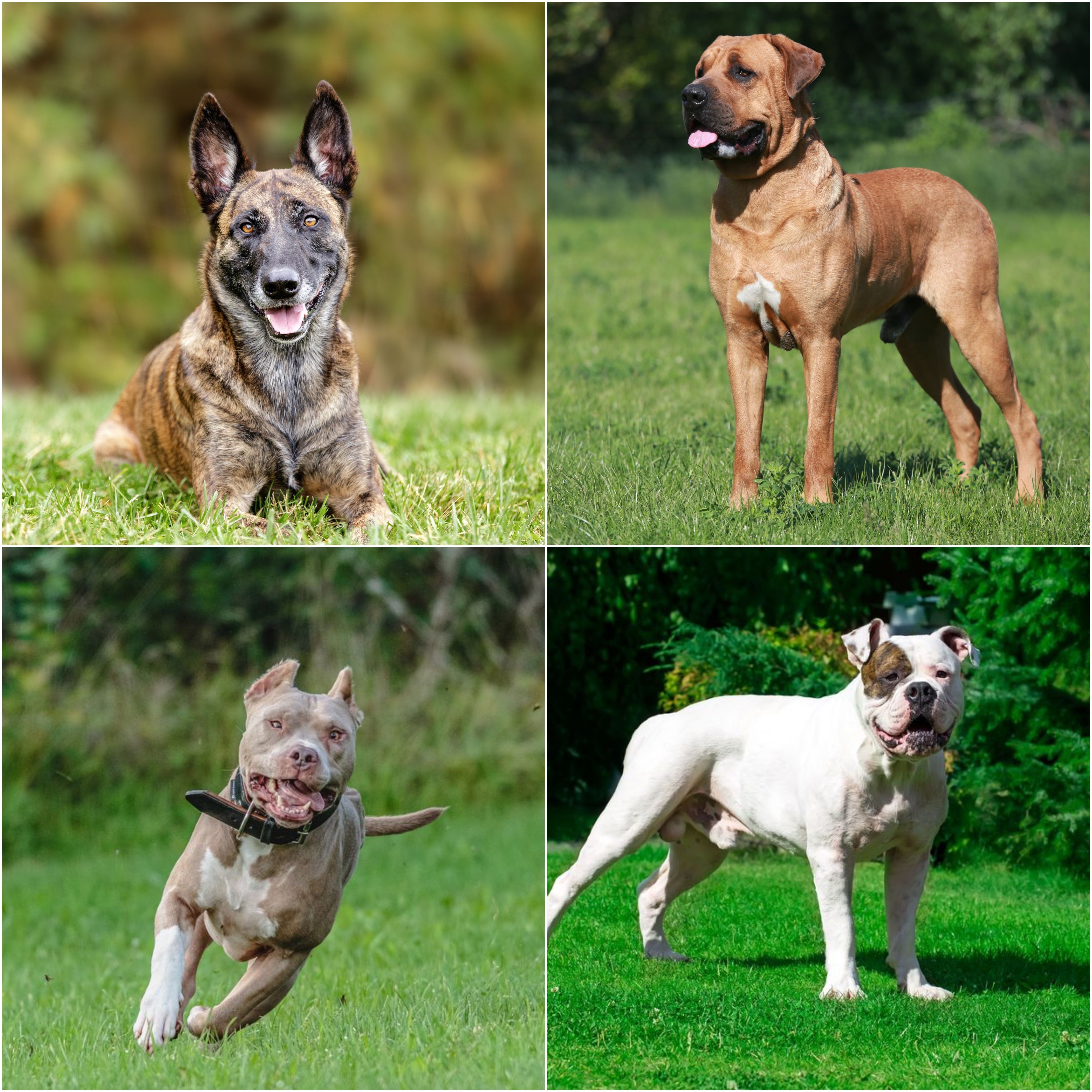A Pitbull has a bite force of approximately 235 to 250 pounds per square inch (PSI), making it among the top dogs for bite force strength. This makes their jaw stronger than some other dog breeds.
Pitbulls possess one of the strongest bite forces among dog breeds, with a range between 235 to 250 pounds per square inch (PSI). Their powerful jaw muscles and structure contribute to this impressive bite force. Understanding the strength of a Pitbull’s bite is essential for responsible pet ownership and underscores the importance of proper training and socialization for these dogs.
Furthermore, it emphasizes the need for owners to provide appropriate outlets for their physical and mental needs to ensure they remain safe and well-behaved companions.

Credit: spartacuslawfirm.com
Understanding Pitbull Bite Force
Understanding Pitbull Bite Force
Pitbull Bite Force Compared To Other Breeds
Factors Contributing To Pitbull’s Bite Force
Measuring Bite Force
Pounds Per Square Inch (psi) Measure
Pitbulls have a bite force of around 235-250 pounds per square inch (PSI). This means they can exert a considerable amount of pressure when biting down.
Comparison With Other Animals
- Pitbulls have a bite force that is relatively lower compared to other animals like the Rottweiler or the Kangal.
- For example, the Kangal, a breed known for its powerful bite, has a bite force reaching up to 743 PSI.
- When compared to the bite force of a wolf, the pitbull falls short as wolves can exert a forceful bite of around 1,500 PSI.
Implications Of Pitbull Bite Force
When discussing pitbulls, one cannot ignore their incredible bite force. Pitbulls are known for their strong jaws and powerful bites, which have several implications. Understanding the implications of pitbull bite force is crucial, as it helps shed light on the potential injuries caused by their bites and the legal and ethical considerations surrounding these incidents.
Injuries Caused By Pitbull Bites
Pitbulls possess a bite force that can cause severe injuries. Their jaws are designed to lock onto their prey, allowing them to exert immense pressure with each bite. When a pitbull bites, it can lead to:
- Deep puncture wounds
- Tearing of the flesh
- Bone fractures
- Muscle damage
These injuries can be devastating and may require extensive medical treatment, including stitches, reconstructive surgery, and rehabilitation.
Legal And Ethical Considerations
Given the potential for serious harm caused by pitbull bites, there are legal and ethical considerations that come into play. In many jurisdictions, dog owners are held responsible for the actions of their pets. If a pitbull bite occurs due to the negligence or aggression of the owner, they may be liable for the resulting injuries.
Furthermore, communities often engage in debates about the responsible ownership of pitbulls and the need for stricter regulations. Some argue that these measures are essential to prevent future incidents and protect public safety, while others advocate for education and training programs to promote responsible dog ownership.
Ultimately, understanding the implications of pitbull bite force helps pave the way for safer interactions between humans and pitbulls. It is important to remember that while pitbulls have a strong bite force, responsible ownership and proper training can significantly reduce the risk of potential harm.

Credit: www.lawsuit-information-center.com
Breed Characteristics And Bite Force
Pitbulls are a type of dog breed that has a reputation for being aggressive and having a strong bite force. Understanding the physical attributes and behavioral factors that contribute to their bite force can provide valuable insights into their capabilities and behavior. In this section, we will explore the breed characteristics that affect their bite force and the behavioral factors that influence their biting behavior.
Physical Attributes Affecting Bite Force
The physical attributes of a pitbull play a significant role in determining their bite force. Here are some key factors:
- Size and Skull Structure: Pitbulls have a strong and muscular build, with a wide skull and powerful jaws that contribute to their bite force. Their skull features robust jaw muscles and teeth designed for gripping and holding.
- Muscle Mass: Pitbulls have a high proportion of muscle mass in their head, neck, and jaw areas, which allows them to generate a considerable amount of force when biting.
- Jaw Strength: Pitbulls have a bite mechanism known as “scissor bite,” where their upper and lower teeth interlock when they close their mouths, enhancing their bite force.
These physical attributes, combined with the overall muscular structure of a pitbull, contribute to their powerful bite force.
Behavioral Factors Influencing Bite Force
In addition to their physical attributes, certain behavioral factors also influence the bite force of pitbulls. These factors include:
- Temperament: Pitbulls have a strong prey drive and a natural instinct to grip and hold on to their target. This natural inclination enhances their bite force when they engage in activities like play or protection.
- Training and Socialization: Proper training and socialization play a vital role in controlling a pitbull’s biting behavior. Well-trained and socialized pitbulls are less likely to exhibit aggressive biting tendencies, reducing the likelihood of utilizing their full bite force.
- Protective Instincts: Pitbulls are known for their loyalty and protective instincts towards their owners and families. In situations where they perceive a threat, they may resort to using their full bite force to defend their loved ones.
It is crucial to note that while pitbulls may have a strong bite force, responsible ownership and proper training can help mitigate any potential risks associated with their capabilities.
Pitbull Bite Force Myths And Facts
Debunking Misconceptions
Pitbulls, often misunderstood, are the subject of various misconceptions regarding their bite force. Let’s delve into the myths and facts surrounding the strength of a Pitbull’s bite.
Scientific Evidence On Bite Force
- Myth: Pitbulls have the strongest bite force among all dog breeds.
- Fact: While Pitbulls do have a strong bite, their bite force is not the highest compared to other breeds.
- Myth: Pitbulls’ jaws lock when they bite, leading to increased force.
- Fact: There is no locking mechanism in a Pitbull’s jaw; their bite force comes from muscle strength.
Scientific studies have disproved common misconceptions surrounding Pitbull bite force. Contrary to popular belief, their bite force is strong but not the highest in the canine world. Understanding the reality behind Pitbull bite force is crucial in dispelling myths and promoting factual information.

Credit: www.countryliving.com
Managing Pitbull Bite Risk
When it comes to managing the bite risk of Pitbulls, it is essential to focus on training, socialization, and owner responsibility. By understanding the factors that contribute to a Pitbull’s bite force and taking proactive measures, owners can ensure the safety of both their dog and those around them.
Training And Socialization
Training plays a crucial role in managing a Pitbull’s bite risk. By providing proper obedience training, owners can establish a strong foundation of commands and boundaries for their Pitbull. Positive reinforcement techniques such as rewards and treats can be used to encourage desired behaviors and discourage aggressive tendencies.
Socialization is equally important to minimize the risk of bites. Exposing Pitbulls to different environments, people, and animals from an early age helps them develop confident and non-aggressive behavior. Regular interactions with other dogs, supervised playdates, and visits to dog parks allow Pitbulls to enhance their social skills and learn appropriate ways to interact with others.
Owner Responsibility And Education
Owners play a crucial role in managing the bite risk associated with Pitbulls. It is the responsibility of every Pitbull owner to prioritize safety and take necessary precautions to prevent potential incidents. This includes properly securing their property with appropriate fencing or containment systems, using a leash and muzzle when required, and supervising interactions with children or unfamiliar individuals.
Furthermore, education and awareness are key to responsible ownership. Owners should familiarize themselves with local laws and regulations regarding Pitbull ownership, as well as seek out educational resources on responsible dog ownership. Understanding the breed characteristics, potential triggers, and body language of Pitbulls can help owners better anticipate and prevent potentially risky situations.
In conclusion, managing the bite risk of Pitbulls involves a combination of training, socialization, and responsible ownership. By investing time and effort into proper training techniques, gradually exposing their Pitbulls to various environments, and staying educated about responsible ownership practices, owners can help mitigate the bite risk associated with this breed.
Public Perception And Pitbulls
Pitbulls have long been the center of intense public scrutiny. Misinformation and sensationalism in the media have contributed to a largely negative perception of this breed. Despite their loving and loyal nature, pitbulls are often wrongly associated with aggression and danger, perpetuating a stigma that undermines their true temperament and potential as pets.
Media Influence And Stigma
The media plays a significant role in shaping public opinion, and the portrayal of pitbulls in various forms of media has had a detrimental impact on their reputation. Sensationalized and biased reporting has perpetuated misconceptions, leading to widespread fear and prejudice against pitbulls. This unjust portrayal has contributed to the stigmatization of the breed, causing many to overlook their positive traits.
Advocacy For Pitbulls As Pets
Advocates for pitbulls are actively working to debunk myths and promote responsible ownership. Organizations and individuals dedicated to the welfare of these dogs are striving to change public perception by highlighting the loving and gentle nature of pitbulls. They emphasize the importance of education and responsible breeding practices to promote understanding and acceptance of pitbulls as valued family pets.
Conclusion: The Truth About Pitbull Bite Force
Balancing Breed Stereotypes
Dispelling misconceptions about pitbull bite force is crucial for understanding the truth.
Promoting Responsible Ownership
Owning a pitbull comes with the responsibility of proper training and care to promote safety.
Frequently Asked Questions
What Dog Breed Has The Strongest Bite Force?
The Kangal dog breed is recognized to have the strongest bite force among all dog breeds.
Can A Pitbull Bite Break Bones?
Yes, a pitbull’s bite can break bones, especially in areas with delicate bones like the hands and feet. Larger dogs with strong jaws can also crush bones during a bite. The severity of the attack also plays a role in causing fractures.
What Dog Has The Strongest Lock Jaw?
The Kangal breed has the strongest lock jaw among all dog breeds. Their large and powerful jaws exert significant force when biting. However, Kangals are known to be gentle and affectionate with their families.
What Is The Bite Force Of A Pitbull?
A pitbull’s bite force ranges from 235 to 250 pounds per square inch.
Conclusion
The pitbull bite force is undeniably strong. With their powerful jaws and well-developed muscles, pitbulls have the ability to exert significant force when biting. This strength can result in bone fractures and serious injuries. It is important to recognize the potential danger and take precautions when interacting with these dogs.
Understanding their bite force helps promote responsible ownership and ensures the safety of both humans and animals.



